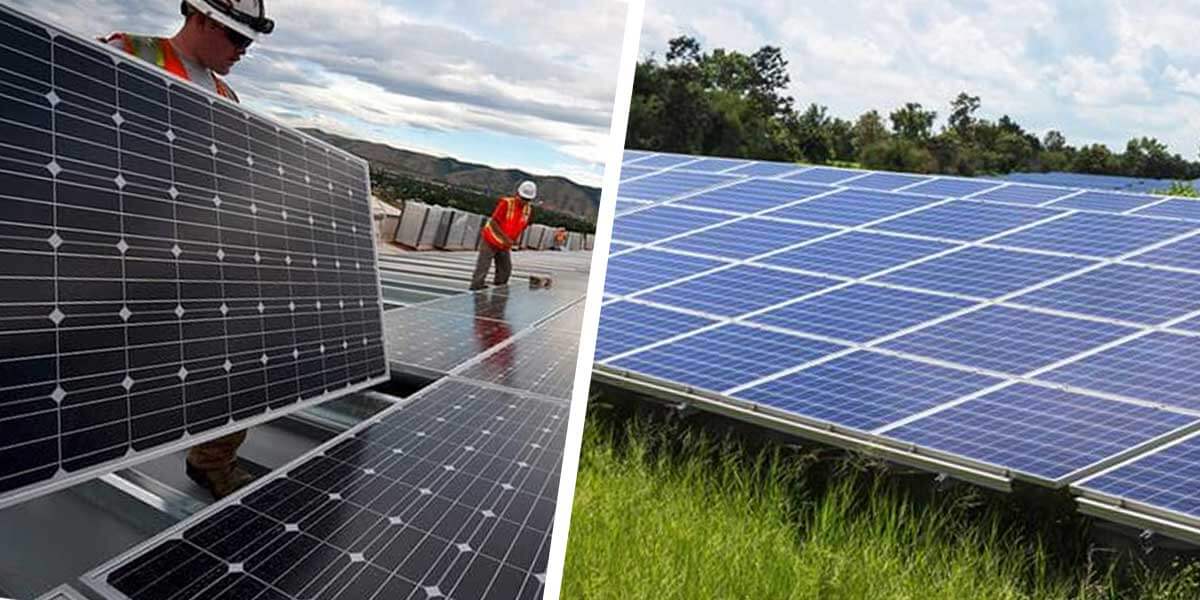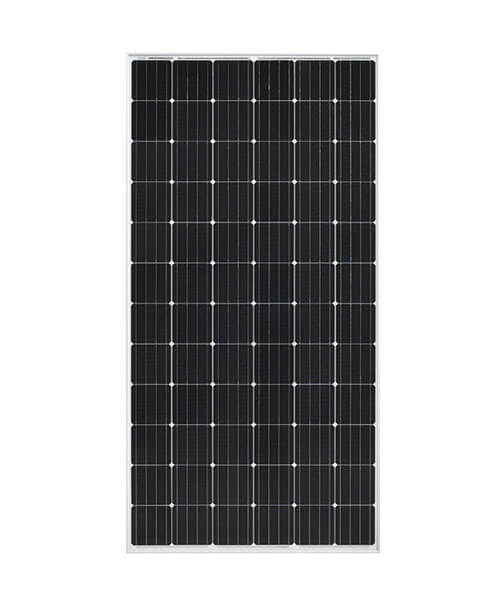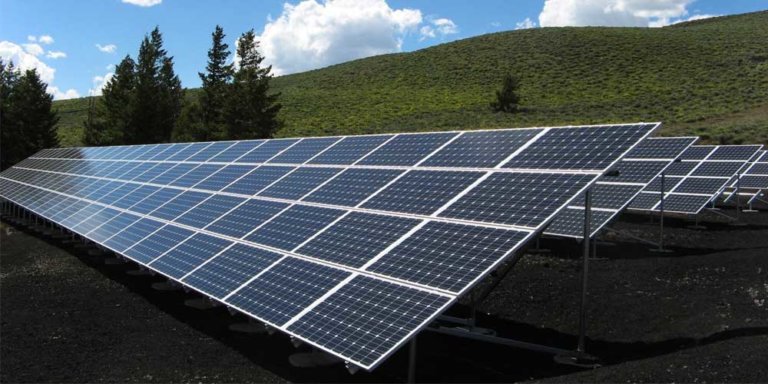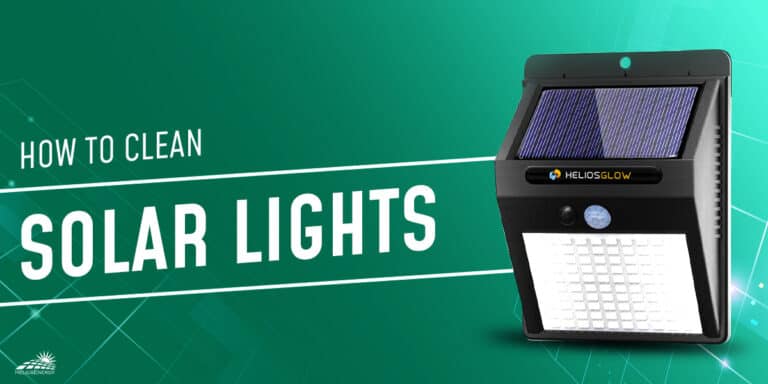Polycrystalline Vs Monocrystalline Solar Panels

Over the last two decades, the world has slowly started moving towards using more conventional energy sources. In this process, the contribution of solar power to the Earth’s overall energy supply has been significant. The installed global capacity of the solar panel has increased year after year for the last two decades.
Solar energy is that form of energy which is renewable, free, sustainable and inexhaustible, while also having many other benefits. Solar panels use this free source of energy as they convert sunlight directly into electricity. This is done through an assembly of multiple solar cells.
There are three different types of solar panels, namely:
- Polycrystalline Solar Panels
- Monocrystalline Solar Panels, &
- Thin-Film Solar Panels
There are two major type of Solar Panels that can be installed in households namely: monocrystalline and polycrystalline. These are the two types of solar panels most commonly available in the market. However, due to a lack of knowledge about what they mean, we often tend to delegate this decision to the company.
At times, we may end up choosing the wrong solar panel that is not very effective but adds tremendously to our utility bills. There are technical differences between polycrystalline and monocrystalline solar panels we all must familiarize ourselves with so that we can make the right choice when it comes to installing solar panels.
In this article, we will walk you through the polycrystalline and monocrystalline solar panels. This article will explain all the differences, pros, and cons of both polycrystalline and monocrystalline solar panels.
What Are Monocrystalline And Polycrystalline Solar Panels?
Monocrystalline Solar Panels

Monocrystalline solar panels contain solar cells made up of silicon wafers. These cells are cut from a single piece of silicon crystal and are neatly arranged in rows and columns to form a rectangle.
These panels are then covered with glass sheets and framed accordingly. Monocrystalline Solar Panels are usually black in color and possess the highest efficiency in terms of generating electricity.
However, monocrystalline solar panels are the most expensive as they are made from a single pure silicon crystal. Because the cell is composed of a single crystal, the electrons that generate a flow of electricity have more room to move.
Silicon wafers are expensive to produce but are very efficient conductors and tend to generate more energy per sqm.
Similarly, monocrystalline panels has a 10% higher power output and require considerably less space than polycrystalline panels, making it perfect for space constrained areas.
Benefits ✅
- High-Efficiency
- Space-Efficient
- Better performance under low-light
- Aesthetically Pleasing
Cons ❌
- Extremely Expensive
Polycrystalline Solar Panels

Unlike a monocrystalline solar panel, polycrystalline solar panel is made from an entire block of silicon crystal that comprises crystals.
The manufacturers melt several fragments of the silicon crystal to form a single silicon wafer which is why they are also referred to as “multi-crystalline” silicon.
Since there are multiple crystals in each cell, this restricts the free flow of electrons, which results in lower efficiency as compared to monocrystalline solar panels.
However, these solar panels are considerably less expensive. In terms of aesthetics, these panels tend to have a blue hue. The process of making polycrystalline solar panels are less wasteful,, with the less raw material being thrown out during manufacturing.
Due to imperfections on the solar surface, these polycrystalline solar panels are slightly less-efficient than their counterpart. Simultaneously, these are not the right choice in space constraint areas and have a 10% less power output than monocrystalline solar panels.
Benefits ✅
- Less Expensive
Cons ❌
- Less Effective
- Less Efficient Under Low-light
- Not Space-Efficient
Monocrystalline Vs. Polycrystalline Solar Panels: Comparison Chart
| Parameters | Monocrystalline | Polycrystalline |
|---|---|---|
| Cost | Highly Expensive | Less Expensive |
| Efficiency | High Efficiency | Low Efficiency |
| Aesthetics | Black Hue | Blue Hue |
| Lifespan | 25+ years | 25+ years |
| Temperature Coeff | High | Low |
| Major Manufacturers | Canadian Solar Sunpower LG Hyundai Solar Word | Hanwha Kyocera Hyundai Solar World Trina |
| Space | Requires less Space | Requires More Space |
Difference Between Monocrystalline and Polycrystalline Solar Panels
Shifting over to solar will help you save a considerable amount on your utility bills. However, you need to familiarise yourself with the fundamental differences between monocrystalline and polycrystalline solar panels before you make the shift over to solar energy.
1. Cost
Monocrystalline solar panels are made up from a a single cut piece of pure silicon crystal, making them comparatively costlier than polycrystalline.
Therefore, be sure to draw up a cost-budget analysis before buying either one of them. If you are interested in buying either types of solar panels for your home, look at our article on the best solar energy kits for homes.
2. Appearance
Solar panels are not made for aesthetics as they are made for efficiency and utility. However, many users have found the blue hue of polycrystalline solar panels to be too vibrant on the eyes.
Instead, many prefer using the traditional black monocrystalline solar panels because of their uniformity in appearance,, which makes them aesthetically desirable.
3. Efficiency
Monocrystalline solar panels have a higher-efficiency rate. They are made up of superior grade pure-silicone that offers minimum resistance and a greater flow of electricity between the cells.
While Polycrystalline solar panels lower-priced, they offer a comparatively low-efficiency rate compared to their counterpart due to their reduced silicon purity. Both, have to be wired perfectly in order to realize their true efficiency.
Poor wiring may cause a decline in efficacy while also cause other dangers. Since polycrystalline panels are made up of multiple crystals, there is less space for the electrons to move.
4. Lifespan
Monocrystalline solar panels are more efficient under warm climates and deliver the best results under heat,, and accordingly they can last over 25 years. Most of the monocrystalline solar panels come with a 25-year warranty but long substantially longer than that. Polycrystalline solar panels to offer the same 25-year warranty,, but they vary depending on the manufacturer.
Final Thought
We hope our article was able to cover everything about monocrystalline and polycrystalline solar panels along with all the major differences between the two. If you have had a quote for solar in the past or you are looking at getting solar, it can be confusing which one to choose.
Knowing the difference between both these panels will help you opt for the better one based on your needs. However, it doesn’t matter what panels you use as long as you purchase it from a reliable manufacturer. If you want to know more about solar panels, you can head to this article.






